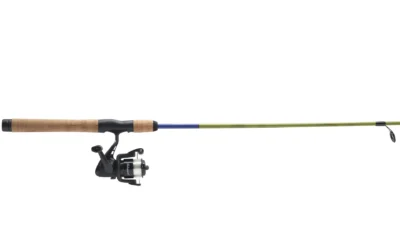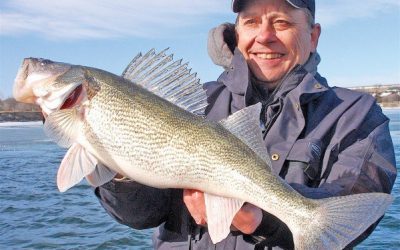Pheasant numbers may be down, but it will not stop die-hard pheasant hunters from hitting the field opening day.
Over the last several years, due to the disappearance of our habitat, our pheasant hunting in northeast Nebraska is very minimal not all that long ago, because of our hilly terrain we have in my area, we had thousands of acres of heavy thick CRP not too far from town. Since that time, the price of row crops has spelled the end of much of that habitat.
Sitting here working on this column, I think back to the great pheasant hunting and the good times I had in the field. It was just yesterday, as I made my way along a meandering creek bottom that worked its way through a steep hillside covered by heavy plum thickets.
As I neared the plum thicket, Mo-Jo, my black lab locked up, on point and seriously thinking about creeping in on a bird buried deep in the middle of the snarled mess of plum thicket and tumbleweeds.
The bird seemed content to sit tight and wait for us to pass, but Mo-Jo would have nothing to do with that, as he was having was having a hard time staying on point.
I gave him the command, get it out of there, he charged into the middle, flushing the bird out the far side.
Because I didn’t see the bird at first, coming out of the thicket, I wasn’t sure if it was a rooster or a hen, then its cackle gave him away, I brought my shotgun up and as the bird appeared the far end of the thicket, I dropped him with a load of number five shot.
I praised Mo-Jo as he brought the bird back to me; a beautiful, long spurred rooster with long tail feathers, one of the nicest roosters I’ve ever taken and now, it’s one that brings back memories when that helps me to relive the memory today.
Mo did a great job of locating and pointing the bird, the flush with the bird cackling as he cleared the thicket was picture perfect shot, making memories that I will always remember.
I often think of this and other hunts for the South Dakota state bird, the pheasant bringing back memories of past hunts.
With each hunt, any other things I pursue in the outdoors; I strive to learn more about what I am after, as it helps me to understand them more clearly.
Ringneck pheasants, a beautiful bird, yet in a way a lot different from other game birds.
I’ve done a lot of research and came up with this information about the Ringneck Pheasant that call the Dakotas, Iowa, Minnesota and Nebraska home.
IA. Oct. 9, 22- Jan.10, 23 https://gooutdoorsiowa.com/
Mn. Oct. 15 – Jan. 10, 2023 https://www.dnr.state.mn.us/
Ne. Oct. 1, 22 – Jan. 31, 2023http://outdoornebraska.gov/
S.D. Oct. 15, 2022 – Jan. 31, 2023 https://gfp.sd.gov
The first 30 pheasants, which came from China, by Judge Owen Nickerson Denny and after crossing the Pacific 26 of the 30 birds surviving the journey.
In June 1908 the first successful stocking of pheasants in South Dakota with three pairs of pheasants from Grants Pass, Oregon.
The first recorded stocking in South Dakota was north of Redfield.
In the fall of 1919, the first South Dakota’s t pheasant hunting season took place.
In Nebraska, the first pheasants purchased by our state’s legislature, arrived in 1915, and in the next ten years, the bird numbers increased and had spread out in Howard, Sherman, Greeley and Valley counties.
The first Nebraska pheasant-hunting season opened in 1927, a three-day pheasant season, held in October in Wheeler and parts of Sherman counties.
Pheasant nesting begins with courtship as roosters scatter from winter cover to establish their territories.
The Roosters crowing attracts the hens, and if they can find good nesting cover, they will begin nest building.
With the arrival of the breeding season, roosters will gather a harem of three to seven hens and fight to keep them.
During the spring, the perfect ratio of hens to roosters is usually about three to one.
Once the hens establish their nest, she will lay an egg each day. The average clutch, the number of eggs in a nest is twelve, but they may lay as many as eighteen.
If the nest is destroyed or the hen is forced from the nest, she’ll attempt to re-nest from one to four times during the spring nesting season.
When the hen is laying eggs, she will seek out calcium and protein, needed to produce the eggs, with her diet containing 10 times more calcium than that of the rooster.
After all the eggs are laid, with the actual number depending on the health of the hen, she begins incubating the eggs and only leave the nest one or two times a day to feed.
The average date nest construction begins is between March 15th to July 15th, the average date incubation starts being May 24th. However, it can take place anytime from April 1st through August 1st with the average hatch occurring around June 15th.
After hatching, the hens will remain with the brood for eight to ten weeks.
Untimely heavy rain and damp weather are a real problem for the young chicks as when they follow the hen through the wet grass, because they have not yet developed their feathers, the down that covers their body, acts like a sponge soaking them to the where they develop hypothermia and die.
Those that survive are able to get in under the hen’s protective feathers to survive wet weather
The chicks will immediately begin growing flight feathers and can make short flights when they are two weeks of age.





0 Comments